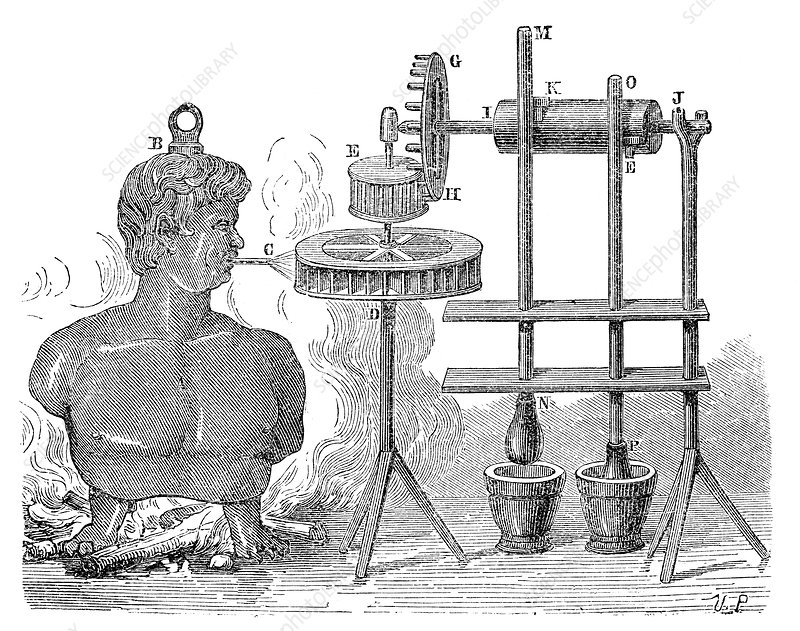Unlocking the Marvels of Mechanistic Progress from 1400AD to 1600AD
Mechanical engineering, a field that has come a great deal from its ancient origins, has witnessed countless milestones throughout its historical trajectory. The field of mechanical engineering has transformed from simple machines to complex devices. This blog post will delve into the wonders of mechanistic advancements between 1400AD and 1600AD. During the Renaissance, Europe saw a revival in learning and renewed interest in science, mathematics, and the arts. This era of innovation led to advancements in mechanical engineering, including the creation of mechanisms. It saw the rekindling of learning and a resurgence of interest in mathematics, science, and the arts. During this time, many inventors and engineers made improvements and invented new mechanisms, resulting in the advent of mechanisms.
One of the most remarkable mechanistic advancements of the Renaissance was the advent of timekeeping devices such as clocks and watches. During the Renaissance, Europe developed and used mechanical clocks in public spaces like town halls and cathedrals. One of the most remarkable advancements in mechanics was the advent of timekeeping devices, such as clocks and watches. A system of cogs and weights kept these primitive clocks in motion, powered either by water or weights. The invention of the spring-driven mechanism in the early 1500s enabled the creation of more compact and portable timepieces.
Schematic of a water-clock Schematic of a mechanical clock
Source: Copernicus.org Source: University of Houston
The Development of Automatons, Another significant mechanistic advancement of the Renaissance was the advent of automatons. Automatons are mechanisms that can execute specific tasks without human intervention. The first automatons were rudimentary devices, such as musical boxes, that utilized a system of cogs and levers to play music. By the 1600s, more complicated automatons, such as clockwork birds and figures, had been developed. One of the most renowned automatons of the Renaissance was The Mechanical Turk, crafted by the Austrian engineer Wolfgang von Kempelen in the 1700s. The Mechanical Turk was a chess-playing automaton that could compete against human opponents. Many people considered the Mechanical Turk a remarkable feat of engineering and celebrated it as a symbol of mechanistic advancements during the Renaissance.
Source: MPIWG
The creation of the first printing press by Johannes Gutenberg in the mid-1400s was a landmark achievement in the history of mechanical engineering. This revolutionary device used movable metal type and a pressing mechanism to produce multiple copies of a text quickly and accurately. Before the printing press, books and other texts were produced by hand, making them rare and expensive. With the introduction of the printing press, the dissemination of knowledge and ideas became much more widespread and accessible. The printing press's creation profoundly impacted the field of mechanical engineering as a whole, inspiring further advancements in printing technology and leading to the mass production of books and other printed materials. This invention also paved the way for the industrial revolution and the growth of modern society, as it allowed for the efficient transmission of information and ideas. Today, the printing press remains a crucial tool in publishing and communication, and its legacy continues to shape our world.
Source: History.com
The creation of the knitting machine by William Lee in the late 1500s marked a significant milestone in the history of mechanical engineering. Lee, an English clergyman, designed and constructed a machine that could produce knitted fabric quickly and efficiently, revolutionizing the textile industry. Before Lee's invention, all knitting was done by hand, making it time-consuming and labor-intensive. With the introduction of the knitting machine, the production of knitted fabric increased dramatically, making it more affordable and accessible to the general population. The creation of the knitting machine set a precedent for the future development of textile machinery. It showed the potential of mechanical engineering to improve significantly and streamline traditional manufacturing processes. Advanced textile machines, integral to the modern clothing industry, continue to feel the impact of William Lee's invention of the knitting machine.
Source: Maker's Mercantile
The concept of flight, as envisioned by Leonardo da Vinci in the late 1400s and early 1500s, profoundly impacted the field of mechanical engineering. Da Vinci, a Renaissance polymath, was fascinated by the idea of human flight and devoted a significant amount of time to exploring and documenting the subject in his notebooks. His designs, which included ideas for wings, gliders, and even flying machines powered by human muscle, were ahead of their time and demonstrated an advanced understanding of aerodynamics. Although his designs were not practical for flight during his lifetime, they laid the foundation for future advancements in aviation. Da Vinci's ideas inspired generations of engineers and inventors, and his influence can still be seen in the modern-day aerospace industry. The concept of flight, as envisioned by da Vinci, continues to be a source of inspiration for engineers and continues to drive the advancement of mechanical engineering.
Source: Encyclopedia Britannica
Conclusion
In conclusion, the period between 1400AD and 1600AD was a time of great innovation and achievement in the field of mechanical engineering. The Renaissance, a time of revival in learning and the arts, saw many inventors and engineers create new mechanisms, resulting in the advent of timekeeping devices, automatons, the first printing press, and the knitting machine. The creation of the printing press revolutionized the dissemination of knowledge, inspiring further advancements in printing technology and leading to the growth of modern society. William Lee's creation of the knitting machine marked a significant milestone in the textile industry, showing the potential of mechanical engineering to improve traditional manufacturing processes. The concept of flight, as envisioned by Leonardo da Vinci, inspired generations of engineers and continues to drive the advancement of mechanical engineering. The mechanistic advancements of the Renaissance laid the foundation for the development of modern technology and continue to shape our world today.


Comments
Post a Comment